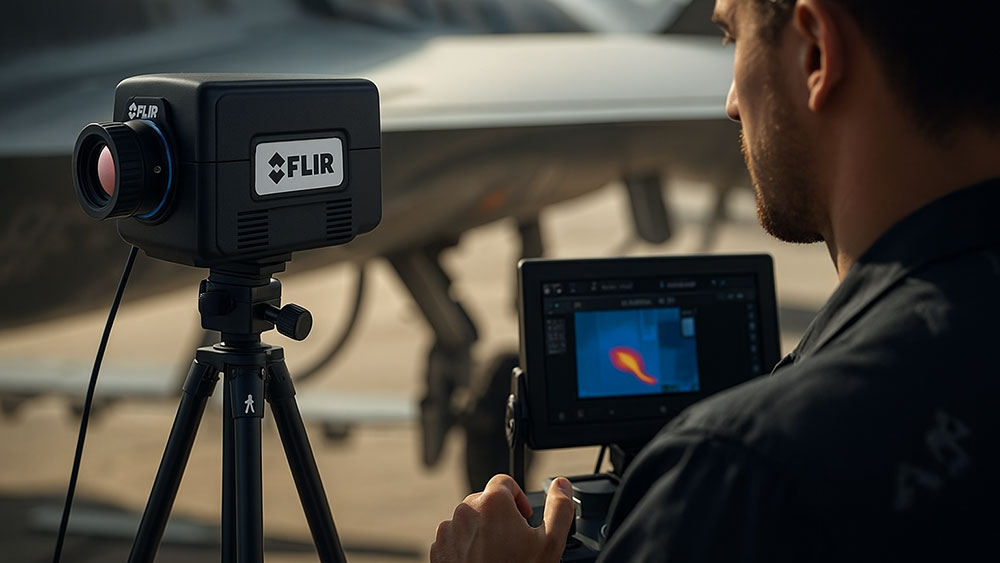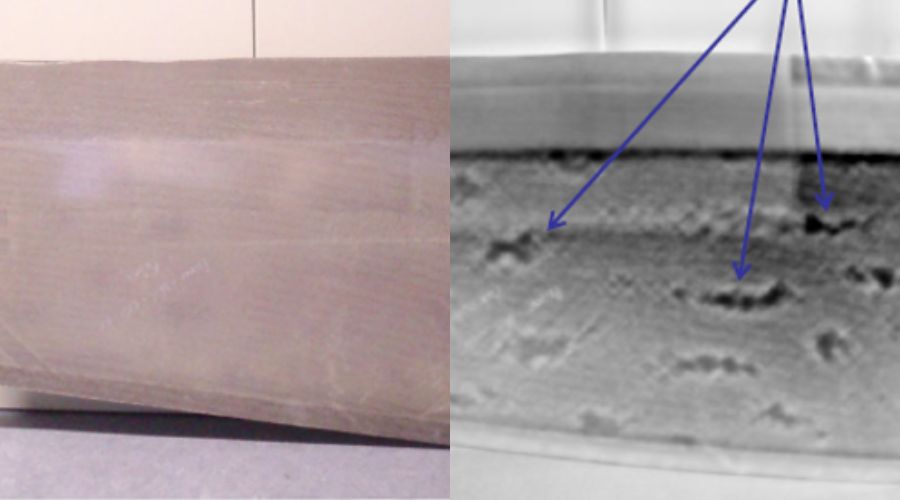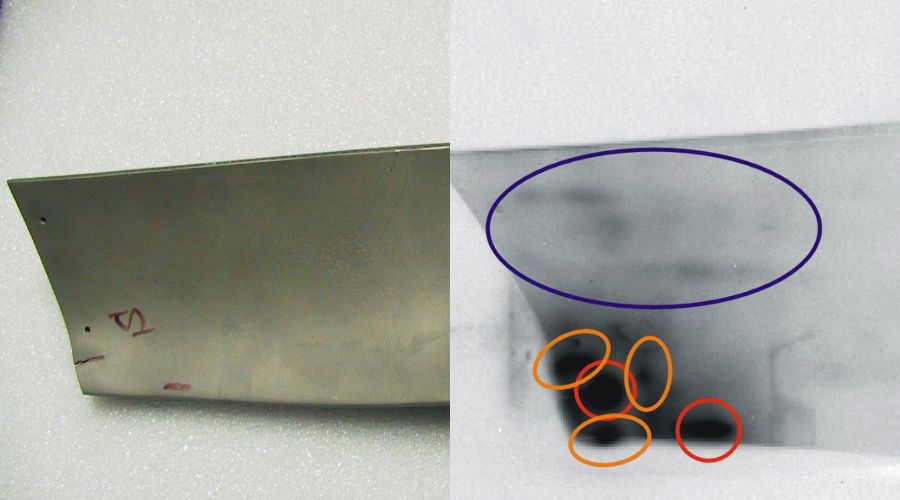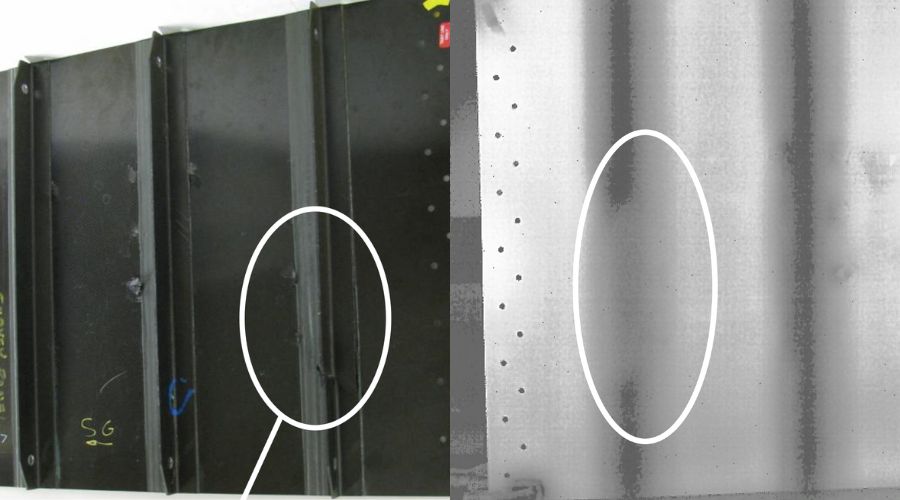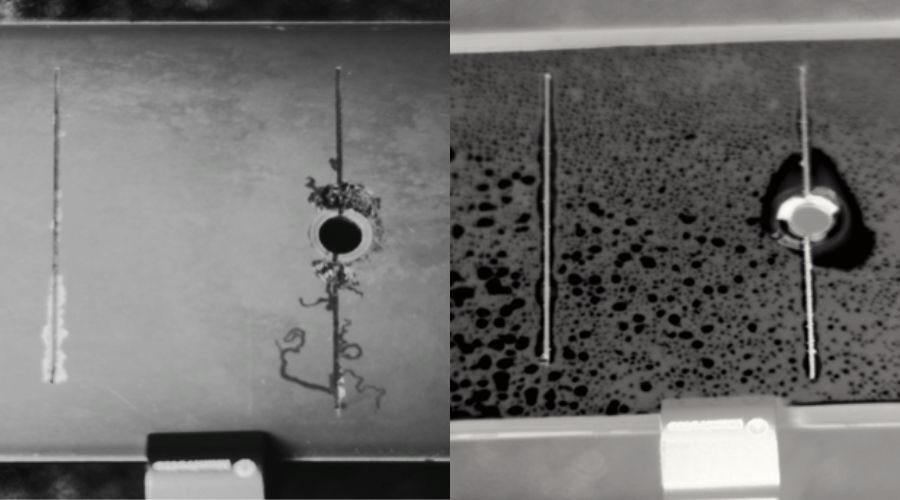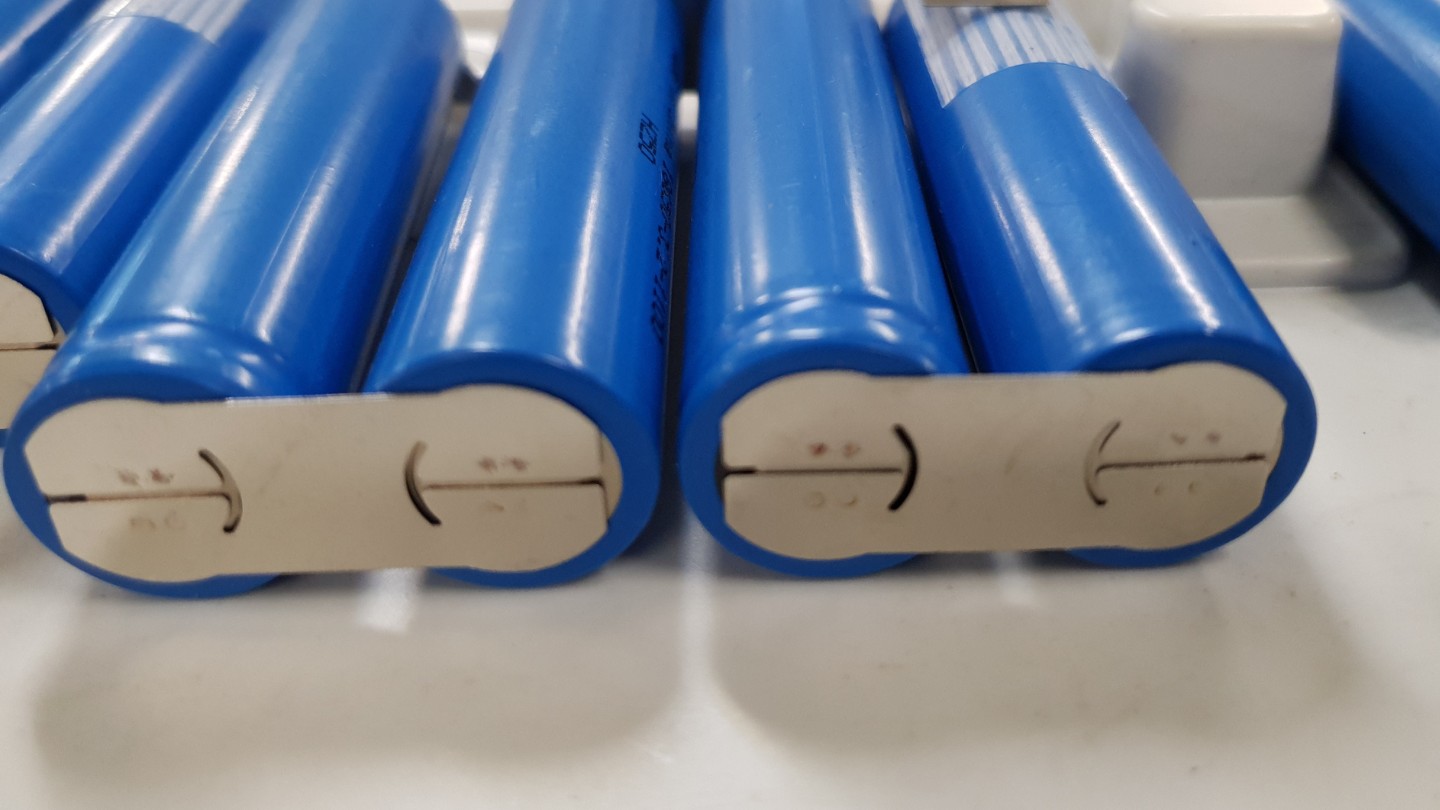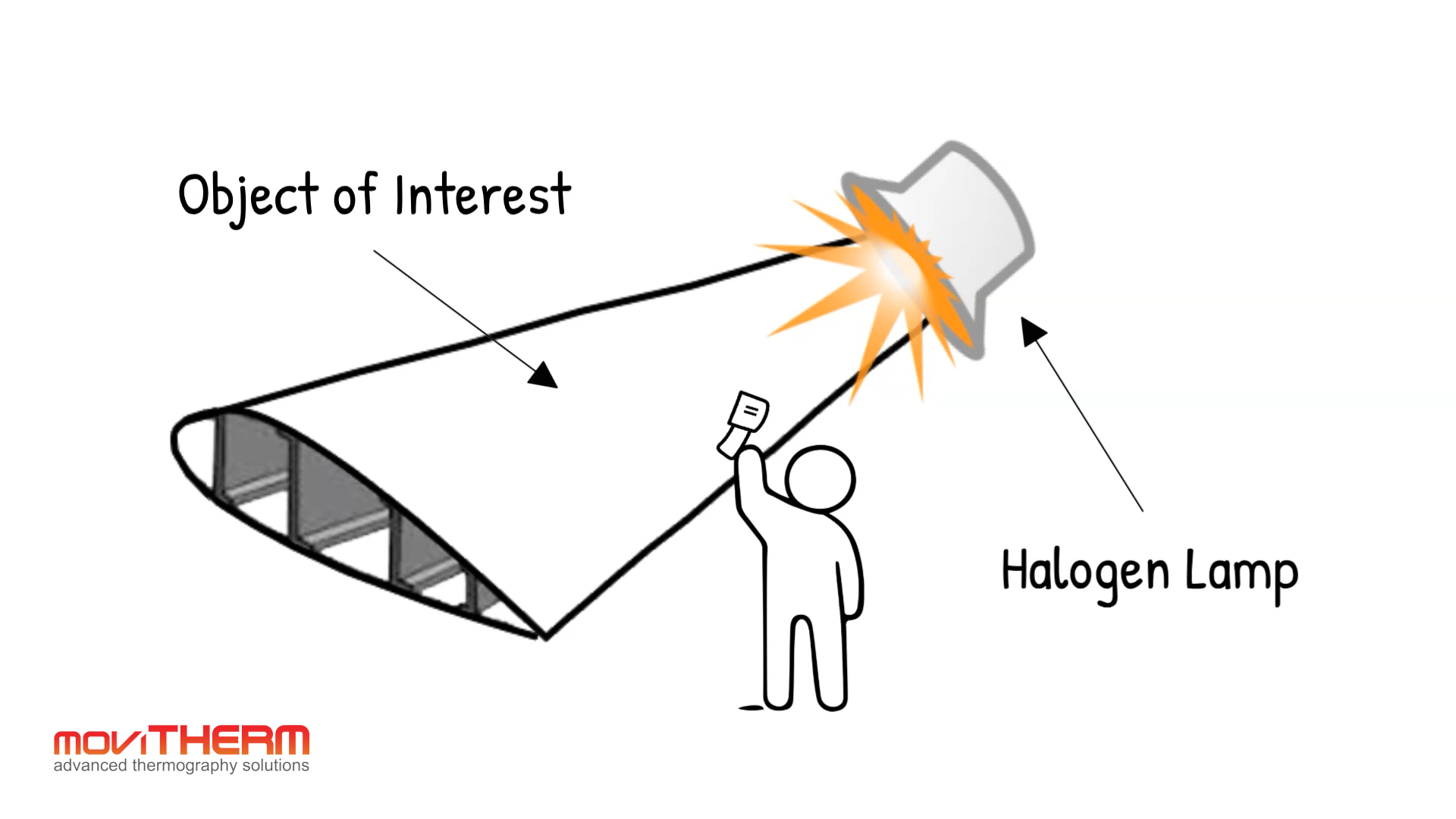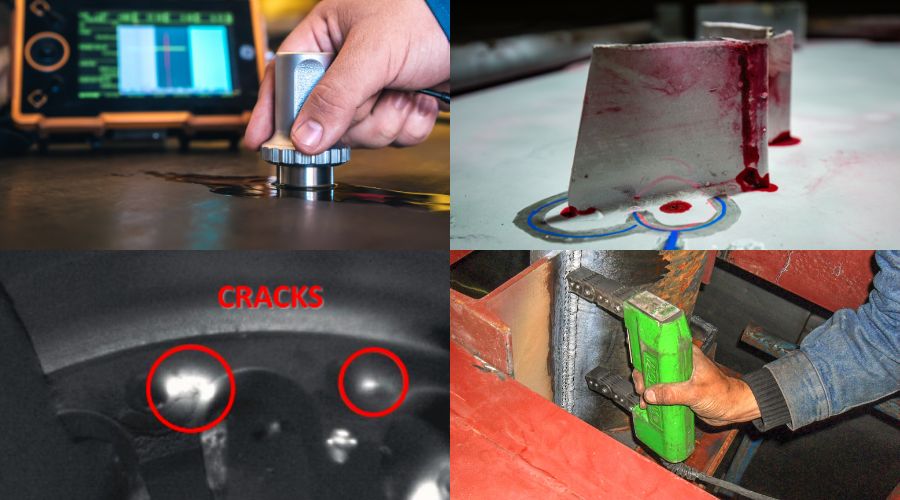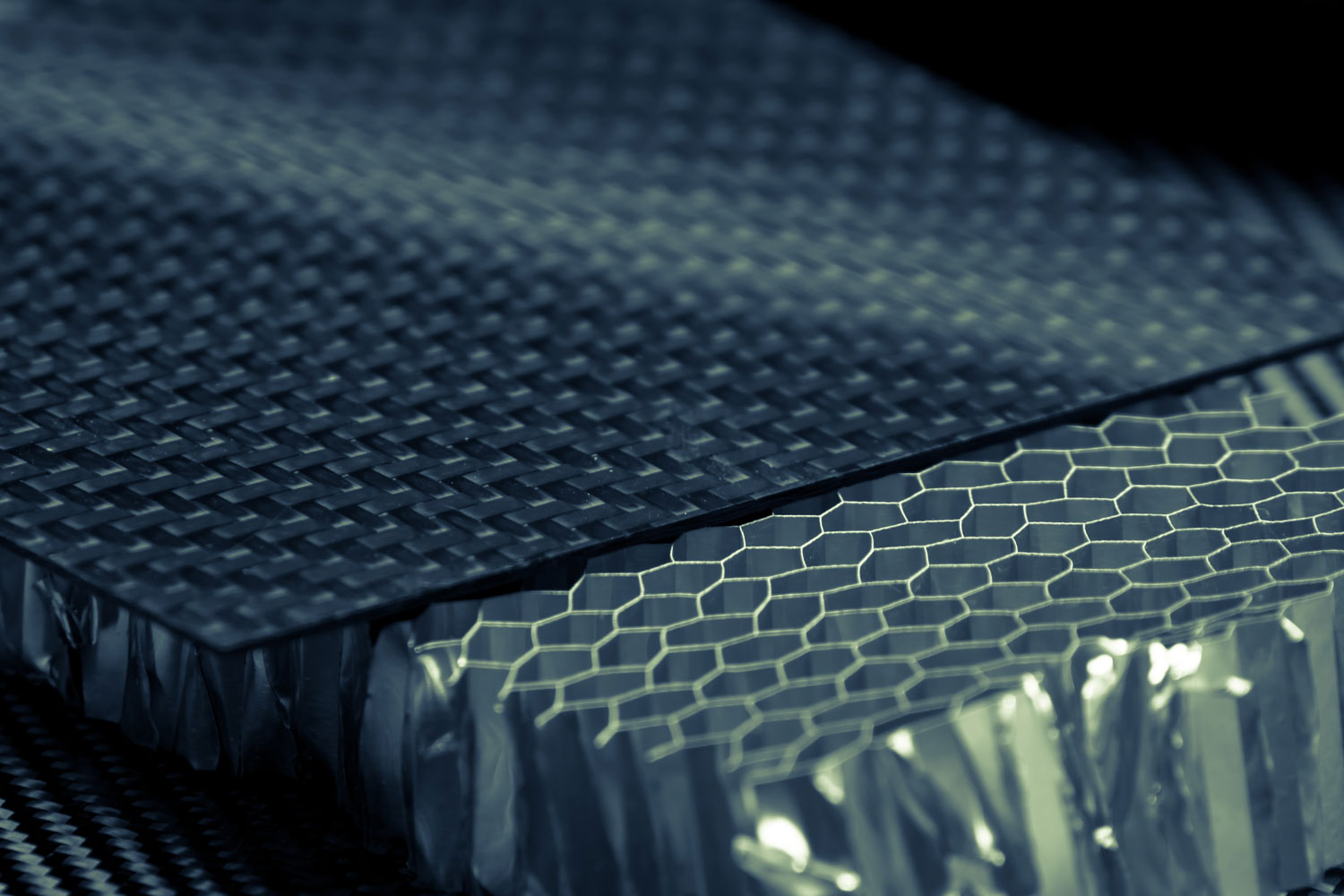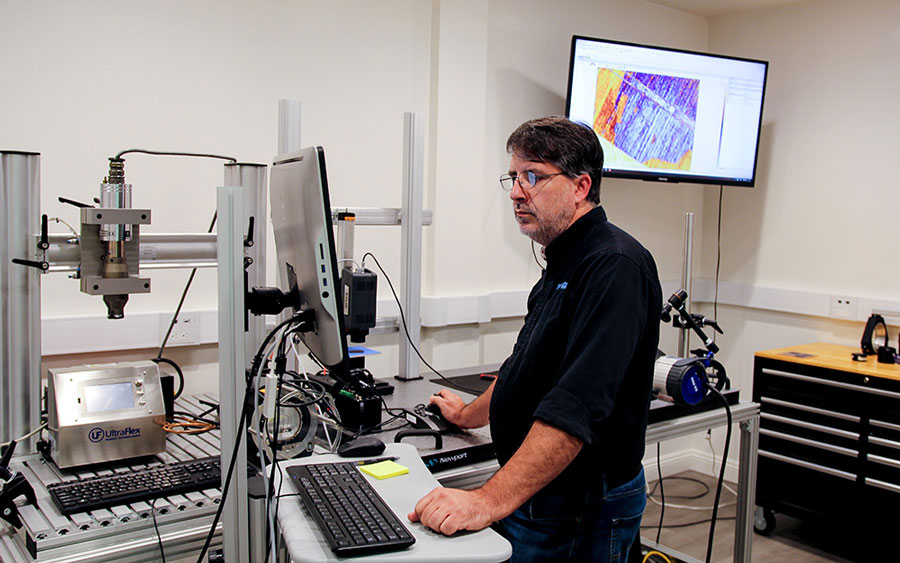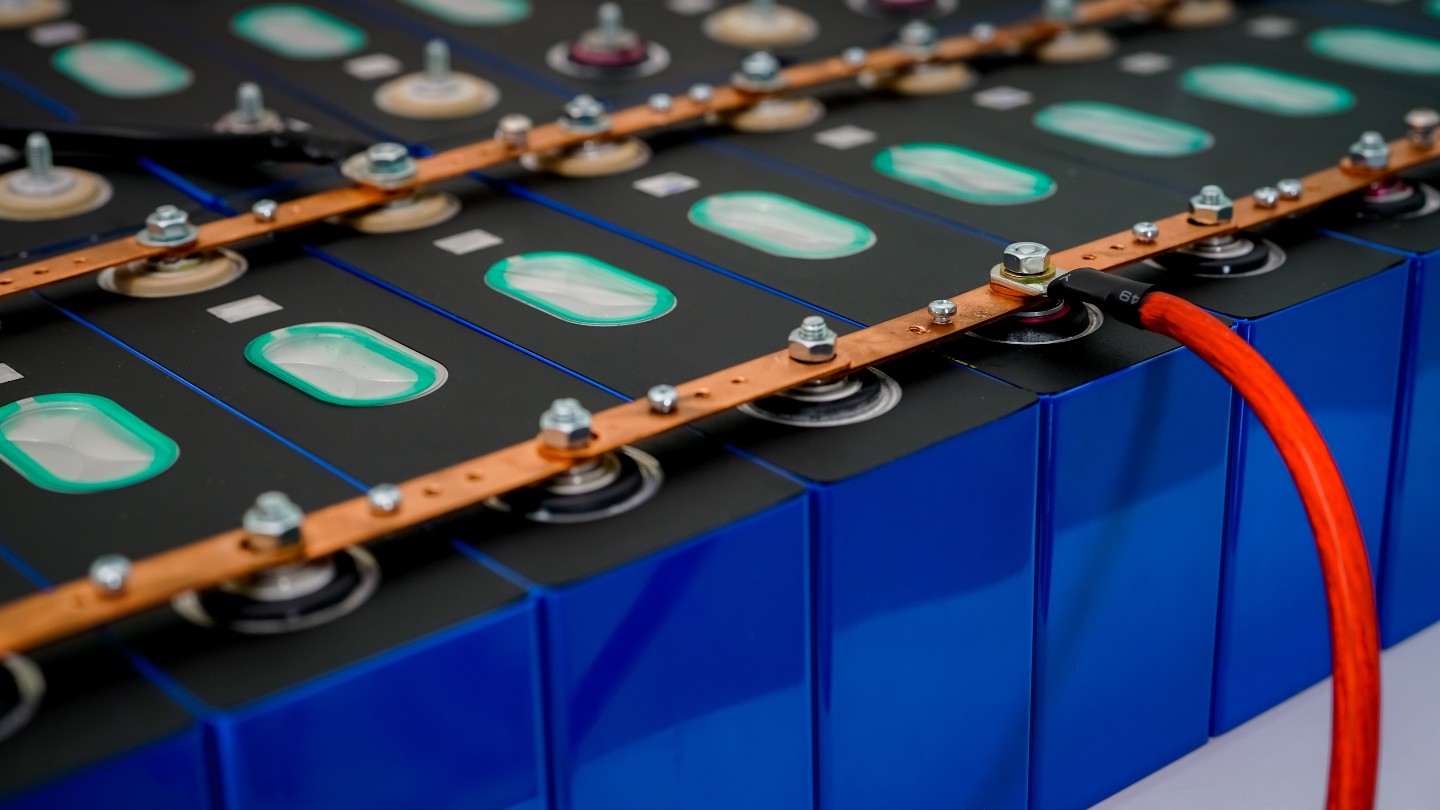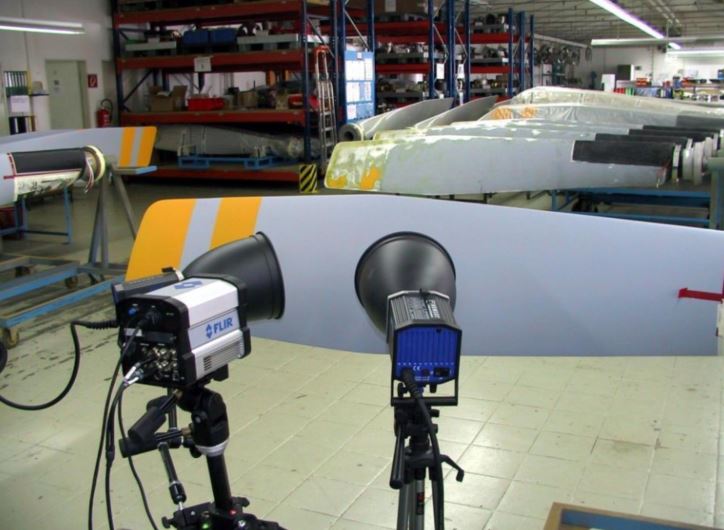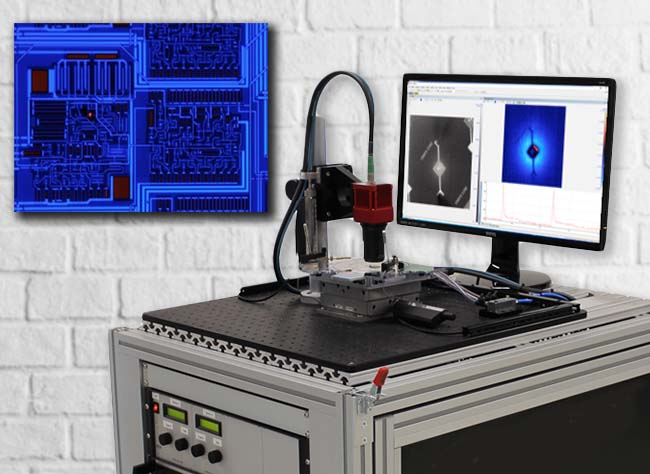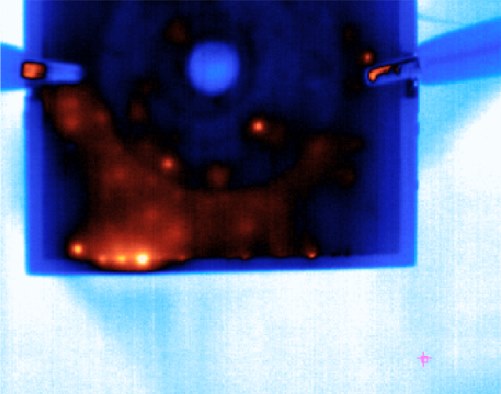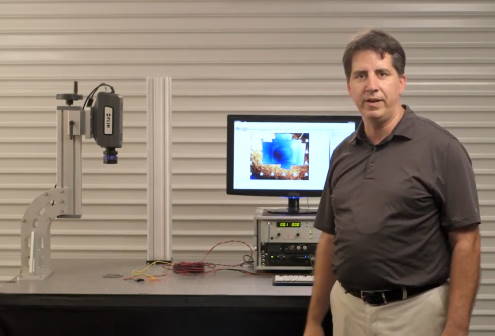Inspection of Water Ingress in Honeycomb Core Material
Water ingress in honeycomb core material is a critical issue in aerospace, automotive, and construction industries as it can compromise structural integrity and lead to significant damage over time. Traditional inspection methods, such as visual inspection and ultrasonic testing, have limitations in detecting and characterizing water ingress.
This article explores the application of active thermography, specifically flash thermography and transient thermography, as an effective non-destructive testing (NDT) technique for identifying water ingress in both non-metallic and metallic honeycomb cores. Additionally, we will discuss the advantages of using infrared NDT over ultrasonic testing for this specific application.
Active Thermography for Water Ingress Detection

Flash Thermography
Flash thermography is a widely used active thermography technique that involves subjecting the honeycomb structure to a short-duration, high-energy pulse of heat (e.g., using a flash lamp). As water has different thermal properties compared to the honeycomb material, any water present in the core will affect the way heat is transferred during the inspection process. A high-speed infrared camera captures the surface temperature response, revealing thermal anomalies indicative of water ingress.
Transient Thermography
Transient thermography relies on a continuous heating source, such as an infrared heater or a moving hot air stream, to induce a thermal gradient across the honeycomb structure. Similar to flash thermography, a thermal camera captures the surface temperature response. By analyzing the temperature decay over time, areas with water ingress can be detected and characterized.
Water Ingress Detection in Non-Metallic Honeycomb Cores
Non-metallic honeycomb cores, often composed of materials like aramid fibers or polymers, pose unique challenges for water ingress detection. The presence of water can lead to swelling, delamination, or loss of mechanical properties. Active thermography techniques provide several advantages in this context:
Sensitivity to Water Content
Active thermography can detect even small amounts of water content within non-metallic honeycomb cores. By analyzing the surface temperature response, thermographic images can highlight areas with moisture accumulation, enabling early detection of water ingress and facilitating preventive maintenance.
Enhanced Depth Resolution
Active thermography techniques can provide depth information regarding the location of water ingress. By analyzing the thermal response over time or applying advanced image processing algorithms, it is possible to estimate the depth of water infiltration, aiding in assessing the severity of the damage.
Water Ingress Detection in Metallic Honeycomb Cores
Metallic honeycomb cores, typically composed of materials like aluminum or stainless steel, have different thermal properties compared to non-metallic cores. However, active thermography remains effective for water ingress detection in metallic honeycomb cores, with a few considerations:
Thermal Conductivity Differences
Metallic honeycomb cores have higher thermal conductivities than non-metallic ones. This can result in faster heat transfer during active thermography, potentially affecting the detection sensitivity. Adjustments in the heating and inspection parameters may be required to optimize the water ingress detection process for metallic honeycomb cores.
Subsurface Reflections
Metallic honeycomb cores can produce reflections of thermal energy due to their metallic nature. These reflections can interfere with the detection of water ingress anomalies. Proper image processing techniques, such as advanced filtering algorithms, can be applied to mitigate the impact of these reflections and enhance the detection accuracy.
Advantages of Infrared NDT for Detection of Water Ingress over Ultrasonic Testing

Surface Accessibility
Ultrasonic testing requires direct contact between the transducer and the surface being inspected. In contrast, infrared NDT is a non-contact technique, allowing inspections to be performed without physically touching the honeycomb structure.
Rapid Inspection
Infrared NDT techniques, such as flash thermography and transient thermography, offer rapid inspection capabilities. The application of short-duration heat pulses or continuous heating sources enables quick scanning of large areas. This is particularly advantageous when inspecting honeycomb structures with complex geometries or when time is a critical factor.
Full-Field Inspection
Infrared NDT provides full-field inspection capabilities, allowing the entire surface of the honeycomb structure to be examined simultaneously. This is in contrast to ultrasonic testing, which typically requires scanning point-by-point, resulting in a time-consuming process. With infrared NDT, potential water ingress areas can be quickly identified, localized, and characterized, enabling efficient decision-making regarding maintenance or repair.
Detection Sensitivity
Active thermography techniques have shown excellent sensitivity to small defects and moisture content variations. The detection of water ingress anomalies, even at early stages, is achievable using high-resolution infrared cameras and appropriate heating methods. Ultrasonic testing, on the other hand, may have limitations in detecting certain types of defects or variations in moisture content.
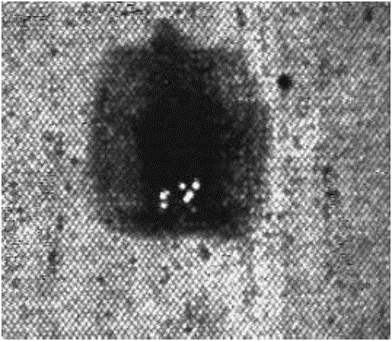
Non-Destructive
Infrared NDT is a non-destructive technique that does not alter or damage the honeycomb structure during inspection. This is particularly important for critical applications where the structural integrity of the honeycomb core must be preserved. Ultrasonic testing, while also non-destructive, requires the use of couplant and direct contact with the surface, which can be challenging or impractical in certain scenarios.
Cost-Effectiveness
Infrared NDT techniques offer cost-effective inspection solutions. The equipment required for active thermography, including infrared cameras and heat sources, is becoming more affordable and accessible. Additionally, the rapid inspection capabilities of infrared NDT can reduce labor costs and minimize production downtime, making it a viable option for industries that require efficient and cost-effective inspection processes.
Conclusion
Active thermography techniques, such as flash thermography and transient thermography, provide effective solutions for detecting water ingress in both non-metallic and metallic honeycomb cores. With their sensitivity, depth resolution, and rapid inspection capabilities, active thermography techniques offer advantages over traditional ultrasonic testing methods. Infrared NDT allows for non-contact, full-field inspection, enabling the detection of water ingress anomalies at early stages and facilitating timely maintenance or repair actions. As technology continues to advance, infrared NDT is poised to play an increasingly significant role in ensuring the structural integrity and performance of honeycomb core-based structures in various industries.
About moviTHERM
moviTHERM – Advanced Thermography Solutions was founded in 1999. The company offers solutions for plastic welding, package sealing, and non-destructive testing. In addition, moviTHERM provides IoT Cloud monitoring solutions for thermal imaging applications for early fire detection, machine condition monitoring, and other applications. moviTHERM is a Teledyne Flir Premium Partner and master distributor for FLIR Thermal Cameras for automation and science applications.



